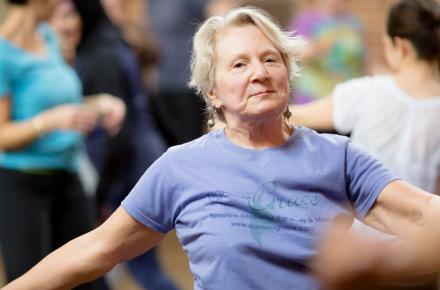The Art of Meal Planning: Five Steps from Hungry to Healthy


In another study proving what we already knew, researchers at Johns Hopkins found that those who cook at home eat a much healthier diet than those who don’t. Regular home cooking lowers your intake of calories and refined sugar, which bolsters the nutrient density of your diet. (Nutrient density is a measure of food quality that compares the concentration of vitamins, minerals, antioxidants, and other healthful nutrients per calorie. Fruits and vegetables are the most nutrient-dense foods, as they are low in calories yet bursting with nutrients.)
And yet, we don't cook. We squeeze in a quick stop at the grocery store on the way home from a long, stressful day. Once we’re there, we find the tastiest, easiest, and quickest options in the freezer, or in boxes or cans. How can we bring mindfulness to the experience of gathering and preparing whole food when we’re so pressed for time, and when the most accessible options are rarely the healthiest ones? What's an eater to do?
As we say here at Kripalu, it’s a practice, so don’t feel bad if you are not creating perfect healthy meals—yet! Bringing intention and mindfulness to the process is nothing less than yoga in action. It’s a shift in attitude.
Just a little bit of planning can greatly improve the quality and nutrient density of the foods you bring into your kitchen and your life. For this process, you will need your journal, smartphone, or whatever else you use to make notes; and your favorite cookbook or website for culinary inspiration.
1. Begin with intention.
Take a few moments to write down why you want to spend a little more time in your kitchen. What are you looking to cultivate in your life through this practice? How might you feel when you are eating regular, balanced, nutrient-dense meals more of the time?
Science suggests that you literally become what you eat, so the choices you make matter. You are worth a quality diet!
2. Vision your week and assess your time.
It takes about 30 minutes a day to cook a whole-foods, plant-based diet and about 30 minutes weekly to plan, plus shopping time once or twice a week. Start with taking a few minutes to sketch out your week. This is a great ritual for a quiet Sunday afternoon or your day off. I give clients a blank calendar on which they can jot down their schedule for the week. Think about what type of week it will be—filled to the brim? Then don’t plan multiple two-course meals with complex recipes. How many nightly cooking sessions will you realistically have this week? Grab-and-go breakfasts only?
If this is all brand new for you, don’t get overambitious: Add just one or two cooking sessions to your week to get started. Even if you cook one more vegetable this week than you do now, you are improving your diet. Begin where you are and make a small shift. Aim for progress, not perfection.
3. Sketch out a simple menu for the week.
Now that you have a sense of your week, think about what you want to cook at home. Keep it simple! If you have a busy week coming up, aim for making just one plant-based dinner, perhaps one that you can spread over several meals. You might make a small pot of your favorite whole grain (brown rice or quinoa, for example) and one vegetable, maybe a bunch of sautéed kale or baby spinach. Think about other meals and snacks, too: How much fruit will you realistically eat through the week? What will you have for breakfast?
Try these quick and easy recipes from the Kripalu Kitchen to get started:
Kale with Pepitas
Squash Bisque
Traditional Hummus
Baked Oatmeal
4. Make a shopping list.
Make a shopping list based on the menus you’ve sketched out. Look through any recipes you’re planning for the week, and make sure you write down all the ingredients, even if you think you can remember them. Having a list will help keep you on point so you stay in the produce and refrigerator aisles and far away from the prepared food.
5. Minimize food waste.
If you find yourself tossing or composting lots of your formerly beautiful produce, no worries. It’s a natural phase of the process. Minimizing the food you toss is all about contingency planning. Every chef has a few ways to use up old produce. One easy way to save veggies that are on the way out is to chop them quickly, blanch them in hot water, and freeze them to be used later in soup stock or sauce. Older fruit can be cut or blended and then frozen, to be used in smoothies or baked goods.
Gathering and preparing a whole-foods, plant-based diet is all about cultivating the planning, shopping, and cooking habits that will get you in the groove. Whatever time and energy you put toward planning will pay off, and remember to give yourself props for the effort that you’re making. Just reading this article was your first step—nice work!
© Kripalu Center for Yoga & Health. All rights reserved. To request permission to reprint, please e-mail editor@kripalu.org.




















































